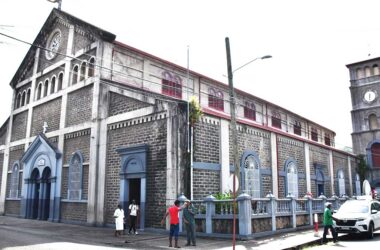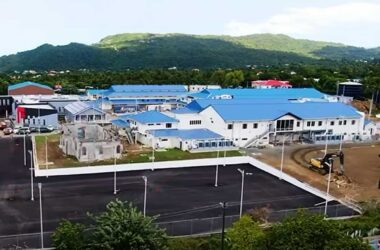IN early 2011, I published a small book entitled,“Cleverly Rearranged Electoral Boundaries- A History of Saint Lucia’s Electoral Districts 1951- 2011”. The book documents the manner in which past Saint Lucian administrations were able to tailor changes in the country’s electoral districts or constituencies in order to gain an advantage over their opponents in general elections. It arose out of a debate in 2009-2011 over whether the Constituency Boundaries Commission (the body charged with reviewing the composition of the island’s constituencies) should have been convened to decide on St. Lucia’s constituencies prior to the 2011 elections.
The book examines the controversy, but goes on to make a fundamental point: that the country’s constituencies should have been redefined from 2001 because they did not conform to the requirements of St. Lucia’s constitution; and that the 2010 Boundaries Commission failed to carry out its mandate when it did not review the island’s constituencies.
A new debate is currently raging over the report of another Constituency Boundaries Commission, one established in March 2013, and which submitted its report to the Governor General in December 2014. That report and its recommendations for four more constituencies in St. Lucia were accepted by the House of Assembly on Tuesday 17th February 2015. Based on the research behind the publication of Cleverly Rearranged Electoral Boundaries, let me clarify some of the issues that are being tossed about in this highly partisan, and sometimes sadly uninformed, controversy over the 2015 Constituency Boundaries Commission Report
First, why was it necessary for the Constituency Boundaries Commission to sit at this time? This was in fact obligatory because the Constitution of St. Lucia was being breached over the last 28 years on two counts and this could only have been halted by the Commission. The first count is that the Commission had not been meeting at the time mandated by the Constitution, which requires it under Section58 (2) to “submit reports at intervals of no less than three years no more than seven years”. In other words, the Commission should meet and review the island’s constituencies every seven years. Since the coming into force of St. Lucia’s Independence Constitution on 22nd February 1979, the Commission has met and submitted reports in the following years: 1987; 2001; 2011 (no report); 2014. If the Commission had been convened according to the Constitution, it should have reviewed St. Lucia’s constituencies in the following years: 1986; 1993; 2000; 2007; 2014.
Instead of at seven year intervals, the Commission has been meeting virtually every 14 years; and therefore its establishment and reporting in 2014 has ended this constitutional infraction and actually restored the time frame at which it should be working.
The second ground on which the Constitution was being breached was that from 2001, St. Lucia’s constituencies have not conformed to the requirement of Section 58 Schedule 2 of the Constitution that “all Constituencies shall contain as nearly equal numbers of inhabitants as appears to the Constituency Boundaries Commission to be reasonably practicable.” The seven constituencies in the North of the island, in particular Gros Islet and South East Castries have been much larger than the ten in the Southern half of the country, with Gros Islet and South East Castries containing about twice the number of inhabitants as most of those in the South. This was the fundamental constitutional infringement that the Commission was obligated to rectify and it accomplished this when it created four new constituencies in the North, thereby increasing the number of constituencies to 21, with each, except Dennery South, having populations ranging from 6,300 to 9,500 inhabitants.
The Parliamentary Representative for South East Castries and a member of the opposition United Workers Party (UWP), Guy Joseph, in defending his court action filed on Wednesday 18th February 2015 seeking to prevent the proclamation by the Governor General of the Commission’s Report on the basis that the process of compiling the Report was unconstitutional, declared that when a country breaches its constitution, this is a dangerous development for its democracy. He is correct; and so the convening of the Constituency Boundaries Commission in 2013 and its work in bringing equality to St. Lucia’s constituencies is a strike for democracy and good governance for it ended a serious contravention of our country’s constitution which had been ignored for decades by politicians and the people. It can be added that ignorance by the people of such constitutional infractions is just as perilous for a democracy as inaction to correct them.
The accusation that the Prime Minister Dr. Kenny Anthony, engineered the summoning of the Boundaries Commission at this time in order to benefit politically from it for the next elections, is also misleading, for as far back as September 2009, when he was Leader of the Opposition, he had called for the Boundaries Commission to review the island Constituencies as is described in “Cleverly Rearranged Electoral Boundaries”.
The constitutional necessity of the 2015 Constituency Boundaries Commission Report, leads me to the second argument being generally cited against implementation of the report’s recommendations. That is the cost factor; it is being argued that given the country’s difficult economic situation and Government’s desire to reduce its fiscal deficit, particularly its expenditure on the public service, this is not the time to increase the number of constituencies as this will be an added financial burden that the country cannot afford. However if a country’s constitution is being transgressed, as St. Lucia’s has been for the last two decades with respect to the size of its constituencies and the operation of its Constituency Boundaries Commission, then the cost of rectifying this constitutional abuse cannot be used as a reason not to stop the breach. Responsible democratic governance cannot be held hostage to financial considerations.
In any case if the inequality in the populations of the constituencies is to be left untouched for another seven years, then the problem of a constitutional infraction will become worse as the population in the north of the island continues to surge and it will be more costly to rectify in the future.
It has been suggested that the Commission could have reduced on the number of constituencies, instead of increasing them, by creating large constituencies across the island- in other words combine those in the south so that they are equal to those in the north. This is acceptable and my book suggests that this was one of the options; but more, large constituencies without a support system of elected local government would deprive the citizens of the south of the quality of parliamentary representation they presently enjoy. From my point of view a smaller number of constituencies, but larger electoral districts, should be accompanied by constitutional reform related to the nature of the Executive and of representation of the people. Then there is the consideration that a reduction in the number of constituencies would create even more of a political firestorm as such a step would adversely affect the number of constituencies held by the opposition UWP more than the ruling SLP.
Finally although not widespread, the charge of gerry-mandering has surfaced in the ongoing debate-that is that the SLP Government has altered the number of constituencies in such a way as to enable it to defeat the UWP at the next elections. The fact that the UWP is not seriously promoting that line, at least not yet, indicates that it should not receive any credence; and based on the history related in “ Cleverly Rearranged Electoral Boundaries” and my study of voting patterns in St. Lucia from 1974, I will be bold enough say that the changes in St. Lucia’s constituencies recommended by the 2014 Report of the Constituency Boundaries Commission are not a clever rearrangement of the island’s constituencies but are in fact the fairest rearrangement of these electoral districts since 1961.
(Cleverly Rearranged Electoral Boundariesis available at AF Valmont’s Book Salon and at Cosmopolitan Bar in Castries)














